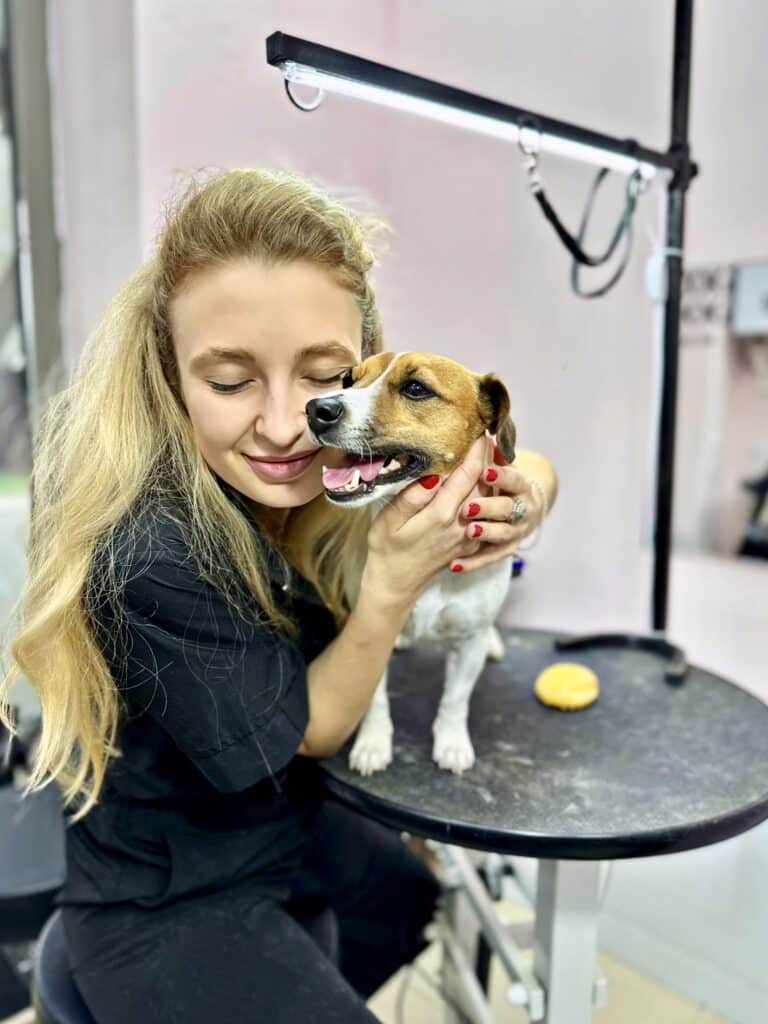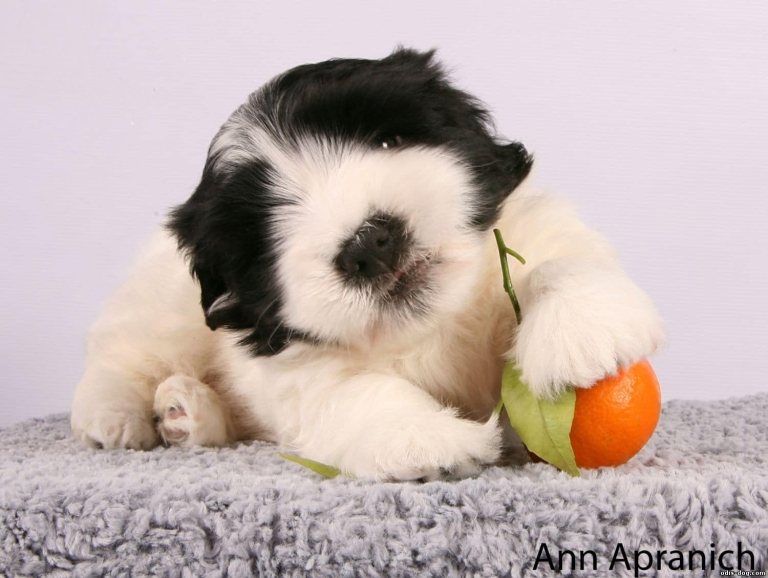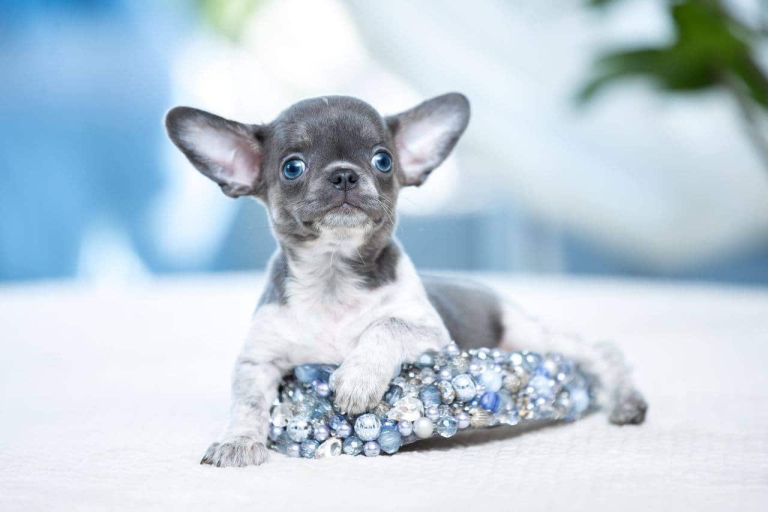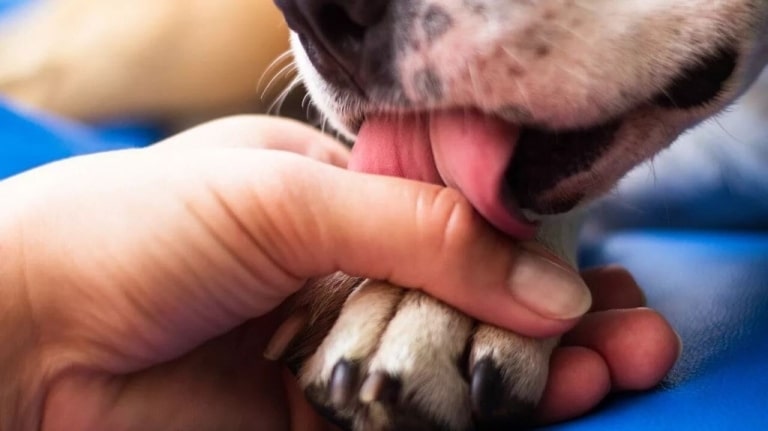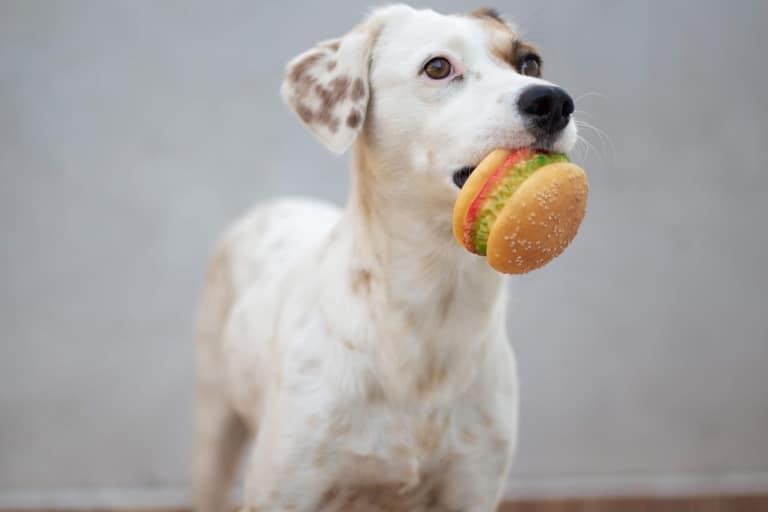Overview of the Importance of Grooming for Pets
Grooming is a fundamental aspect of the well-being and health of pets. Regular grooming helps maintain cleanliness, prevents matting in fur, reduces the risk of skin infections, and ensures overall comfort for the animal. Additionally, the grooming process allows for early identification of potential health issues, such as parasites, skin diseases, or unusual hair loss.
Grooming is also important for the psychological comfort of animals. Clean, well-groomed pets often feel happier and more socialized. Regular care helps maintain healthy fur and skin, prevents unpleasant odors, and ensures the animal’s comfort.
Grooming as an Art
Grooming requires patience, attention to detail, and a deep understanding of each animal’s needs. Each pet is unique, and grooming should be tailored to their individual character, fur type, and lifestyle. Therefore, grooming can rightly be called an art form.
Grooming is also a way of establishing a connection between the owner and the pet. It’s a time to show care and love to your furry friend. In this process, every brush stroke, every act of care, is an expression of affection, strengthening the emotional bond.
It’s a comprehensive approach to care that combines aesthetics, health, and emotional well-being, making it an integral part of life for every responsible pet owner.
Historical Overview of Grooming
A Brief History of Grooming and Its Evolution
Grooming as an essential part of pet care has deep historical roots. Its history begins with ancient civilizations, where people already recognized the importance of caring for their animals. There is evidence that in ancient Egypt, where cats were considered sacred animals, there were special rituals for caring for their fur.
In medieval Europe, especially among the nobility, it was popular to have well-groomed dogs accompanying their owners. This required regular grooming, including haircuts, cleaning, and other procedures to maintain the appearance and health of the animals.
In the 19th century, with the development of domestic pet keeping, grooming became more systematic. The first professional salons in England and the USA appeared at this time, and knowledge and techniques of animal care became more accessible to the public.
The 20th century brought significant changes in the grooming industry, particularly due to the development of new tools and technologies. Electric clippers, specialized shampoos and conditioners for fur became the norm. There was also more attention to the individual needs of different animal breeds.
Today, grooming includes a wide range of services, from basic cleaning and haircuts to specialized procedures such as spa care and therapeutic massage. Grooming has become a true art, requiring professionalism, knowledge, and love for animals.
Basic Principles of Grooming
General Approaches and Methods of Grooming
Understanding and applying the basic principles of grooming is key to effective care.
Regularity: Grooming should occur regularly. The frequency depends on the breed, type of fur, health, and lifestyle of the pet. For some animals, grooming once a week is sufficient, while others may require daily care.
Individual Approach: Each animal is unique, and its grooming needs can significantly vary. It’s important to consider the characteristics of the fur, skin sensitivity, and behavioral traits.
Proper Use of Tools: Using the right tools, such as brushes, combs, scissors, and clippers, is important for effective grooming. Each tool has its purpose and method of use that respects the pet’s skin and fur.
Gentleness and Care: Grooming should not be stressful for the animal. A gentle and caring approach during grooming helps to soothe the pet and makes the process enjoyable for both sides.
Pet owners should master basic grooming skills. Professional courses, video tutorials, and consultations with groomers can be helpful to understand the best practices and techniques.
Hygiene and Health: Grooming also includes care for the eyes, ears, teeth, and nails. Regular teeth cleaning, nail trimming, and ear cleaning are important to prevent infections and other health issues.
Stress Prevention: It’s important to create a calm and comfortable environment during grooming. This can include the use of soothing music, rewarding the pet with treats, and gradual acclimatization to the process.
By following these basic principles, grooming becomes more than just care for appearance. It becomes a means of supporting the physical health and emotional well-being of our pets.
Grooming Techniques and Secrets
Grooming encompasses various techniques and tools, each with its own special purpose. The application of the correct techniques and tools depends on the type of fur, the condition of the pet’s skin, and your grooming goals.
Brushing and Combing the Fur
Tools: Different types of brushes (e.g., slicker brushes, metal combs), furminators for undercoat removal.
Techniques: Regular brushing helps prevent matting and reduces shedding. It’s important to use the right type of brush depending on your pet’s fur type.
Bathing
Products: Specialized shampoos and conditioners depending on the fur type and skin sensitivity.
Techniques: Bathing should not be too frequent to avoid drying out the skin. It’s important to thoroughly rinse off shampoo to prevent skin irritation.
Hair Trimming
Tools: Professional scissors, electric clippers.
Techniques: Trimming should meet the breed standards (if important) and be healthy for the fur. Some breeds require specialized trimming techniques.
Eye and Ear Care
Products: Special lotions for cleaning eyes and ears.
Techniques: Regularly removing discharge from the eyes and cleaning the ears helps prevent infections.
Nail Trimming
Tools: Nail clippers.
Techniques: Nail trimming should be done carefully to avoid damaging blood vessels.
Dental Hygiene
Products: Pet toothpaste, toothbrushes.
Techniques: Regular teeth cleaning helps prevent tartar build-up and gum diseases.
Special Products
Products: Detangling sprays, coat shine products, anti-parasite products.
Techniques: Using these products can help improve appearance and protect against external threats.
The use of these techniques and tools requires knowledge and experience. The key is to understand the needs and characteristics of your pet and to select the necessary tools and products accordingly. It’s important to remember that the comfort and safety of animals are priorities in any grooming process.
Grooming Features of Different Breeds Individual Grooming Needs of Different Breeds
Each breed of pet has its unique features, requiring a special approach in grooming. From fluffy cats to smooth-haired dogs, every animal deserves care that meets its specific needs.
Tips for Grooming Specific Breeds
For Poodles: Poodles have unique curly fur that requires regular grooming to prevent matting. Use special brushes and trim them frequently to maintain cleanliness and the shape of the fur.
For Yorkshire Terriers: Their long, silky hair requires daily combing. Use soft brushes and conditioners to keep their fur shiny and healthy.
Labradors: Labradors have dense, water-repellent fur. Regular brushing helps manage shedding and maintains skin health.
For Persian Cats: Their long, thick hair requires daily grooming. Use wide combs to avoid tangling and keep the fur in excellent condition.
For Chihuahuas: These small dogs have relatively low grooming needs. Regular brushing with a soft brush and bathing every few weeks are usually sufficient.
For Beagles: Their short hair is easy to care for. Regular brushing with a special glove or soft brush helps keep the fur clean and shiny.
For Sphynx Cats (Hairless Cats): Although these cats have no fur, they need regular baths to remove excess skin oil.
Interesting Facts:
Did you know that poodles are often used in dog shows thanks to their unique ability to have their fur styled in various ways?
Labradors: These dogs have a special layer of fur that helps them swim in water!
Persian Cats: Their long fur makes them resemble little lions.
These cats love warmth and often seek out sunny spots to warm up.
Tips from the Professionals at V.O.G DOG Pet Beauty Salon
Regularity is the key to successful grooming. Don’t wait until your pet’s fur becomes tangled or dirty.
Choose the right tools: Depending on your pet’s fur type, select appropriate brushes, shampoos, and scissors.
Be careful with skin and fur: Always act gently, especially during trimming or nail clipping.
Consider individual needs: Each breed has its characteristics. Pay attention to special grooming requirements for your breed.
Make the grooming process enjoyable by rewarding your pet with treats and positive attention.
Collaboration with professionals: If you are not confident in your abilities or have doubts, don’t hesitate to seek help from professional groomers.
Remembering these tips, you can ensure the best care for your furry friend, whether you choose home grooming or the services of a professional salon.

